QuestionHi! I am starting up my first tank (well... I did have a goldfish once... but I was maybe 10) and I have a question. The tap water up here (my college is in the mountains) is kinda questionable. I have stuff to help purify the water, but I also think we have a rust problem (college dorms seem to be falling apart these days). I was wondering if the rust would be eliminated with something like Start Right or something else that "says" it takes care of heavy metals. I wasn't sure and so I am holding off on getting any fish until I do know. Also, my tank is only 10 gallons, and I really love the Black Fin Sharks (at least I think that is what they are called... they are a breed of catfish). Anyway, I know they need to be in groups of 3 or more, but by the time they are full grown (6 inches?) they will obviously be too big for my tank. So, my second question is; are there any similar kinds of fish that would do well in a 10 gallon tank for the rest of their life? I might upgrade to a 20 gallon tank, however I am limited right now since I am living in a dorm room. I really love all the catfish species, but I don't know if there are any small enough to be in my tank. Ok, I'm sure I've talked way to much now, but I just wanted to make sure my fish get a good home. Take care!
Nicole
AnswerHi Nicole;
The water conditioner should work just fine. I have the same problem where I live and my fish do quite well.
Black Fin Sharks really are better off in a larger tank of 55 gallons or so. Even if they do okay for awhile in a smaller tank they would start to eat or pick on your other fish out of frustration and lack of space.
Start very slow in adding fish to your new tank. You will want to pick out one or two fish that will live in it as it cycles. Cycling takes 6 to 8 weeks, so patience is required! I will include my article about new tanks at the end of this letter to help you through the whole process.
I can't think of any fish that are similar to the sharks you like, but little cory cats have some very interesting patterns on them. They stay small so they are great in 10 gallon tanks. They are bottom fish that will help keep excess food picked up in case you overfeed a bit. You should get them after the break in though. They don't always do well in a new tank.
Platies, guppies, dwarf gouramis, rasboras, danios are all good first fish. Dwarf Gouramis should be purchased as a male/female pair. All the others I suggested are schooling fish, so they should be purchased in 3's or more. Take a look at the dwarf gouramis in the fish store and see if you like them. They would be the perfect fish to start the tank with. Male dwarf gouramis are pretty colorful, but the little females are kind of plain, so don't be shocked when you look at them. They are really cute together though.
Here is the article I told you about;
**********
New Tank Syndrome or Break-in Period
So you have a new tank and you filled it up, put the filter together, mounted the heater into place and turned on the lights. You have all the plants and decorations where you want them....
You are ready for fish.
But, your filter is not ready for a full tank of fish yet.
The filter is running and moving the water and cleaning out crud, right? Of course!
But a very important part of your filter is the part you can't see. An aquarium filter removes the larger visible stuff, but it also must remove the dissolved fish waste that turns into ammonia in the water. To do this, special bacteria must grow in the filter system and on the particles of gravel in the bottom of your tank. This process occurs even on a limited scale in little fish bowls that have no filter in them.
This is "New-Tank Syndrome" or the "Break-in Period". The entire process takes 6 to 8 weeks to complete because these "nitrifying" bacteria grow quite slowly.
Start off with only two hardy fish for every ten gallons of water and don't add more until the 6 to 8 weeks has gone by. Hard to be patient, but it is worth it to keep your fish alive and healthy. As a matter of fact, the bacteria cannot develop without fish in the tank. You can let that tank sit forever without fish in it, but as soon as the first fish goes in the process begins. Avoid changing the filter pads during break-in. This removes the bacterial colonies that are essential to a balanced aquarium. You can rinse the filter pad out in a container of aquarium water. This will preserve most of the bacteria colonies while still allowing your filter to flow freely. Even using bacteria additives and water conditioners when you first set up the tank will not make a tank cycle by itself. If there are no fish to provide food (fish waste) for the bacteria, the beneficial bacteria cultures will die and you will have to start the colonies all over again once fish are added to the tank.
Feed your new fish VERY lightly. Any excess food will cause additional waste your system cannot afford to have right now. If you see food floating around or lying on the plants and gravel after five minutes, too much food is going into the tank. Cut back a little each time you feed until it is ALL gone 5 minutes after you feed them.
During this "break-in period" your tank will become cloudy and milky looking. You may have to tolerate this for the entire break-in period but it is only temporary. Changing 25% of the water three times a week until the break-in period is over helps a great deal. Changing water reduces the ammonia and nitrites that rise while the bacteria continues to multiply. If ammonia and/or nitrites become too high, your fish will become stressed and possibly die. Use a good water conditioner when you replace the water and make sure it is the right temperature to avoid shocking your fish.
When the break-in period is over, do regular water changes and vacuum the gravel at the same time. A change of 25% every one to two weeks is a good rule of thumb. It simply needs to be done for healthy fish.
Following these guidelines will help you get your new tank on the right track.
**********
Followups welcome.
At Your Service;
Chris Robbins

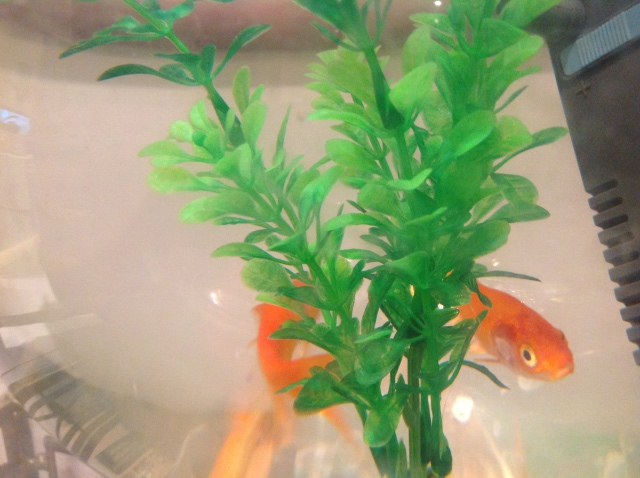 Gold fish
QuestionQUESTION: hi!
I am keeping gold fish for last m
Gold fish
QuestionQUESTION: hi!
I am keeping gold fish for last m
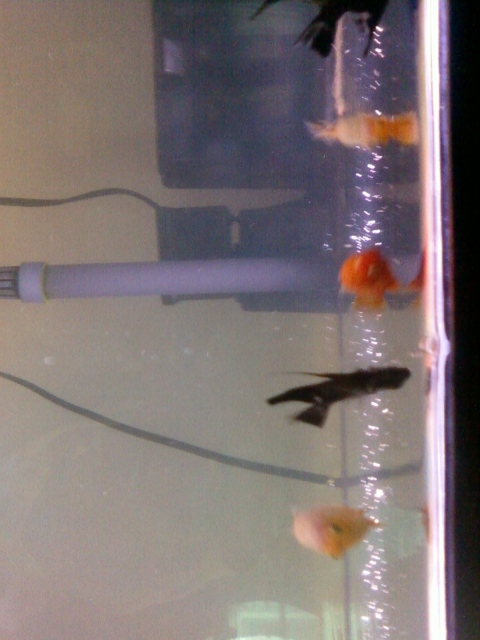 Frustrated Newer tank owner!
Questionmy tank
QUESTION: Hello! Ive had my tank
Frustrated Newer tank owner!
Questionmy tank
QUESTION: Hello! Ive had my tank
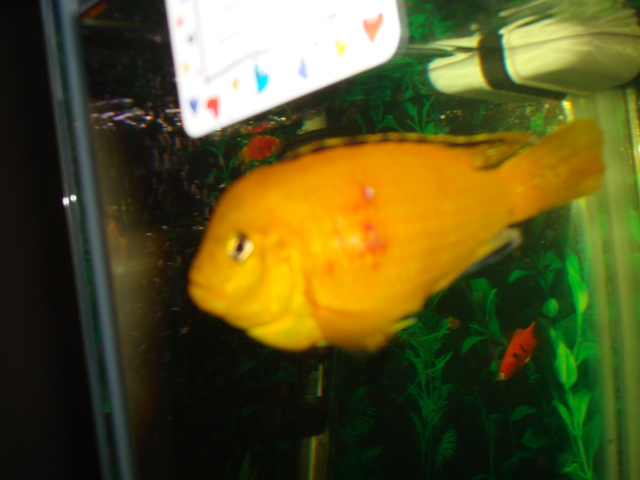 Biggie
Question
biggie
I have had these fish four about 3 year
Biggie
Question
biggie
I have had these fish four about 3 year
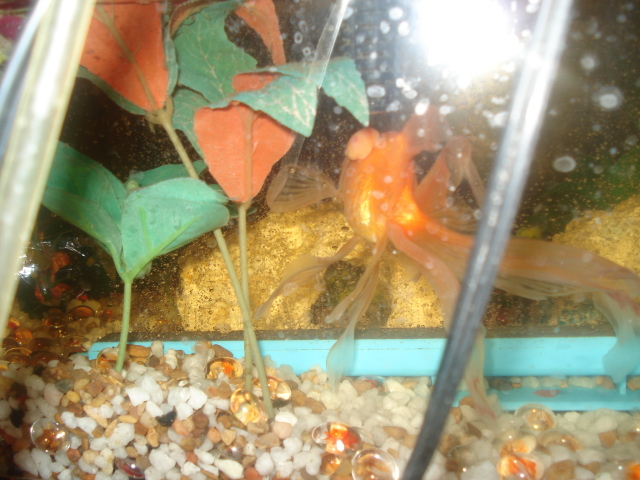 Lump On Fancytail Goldfish
QuestionQUESTION: Please help! I am so concerned for my
Lump On Fancytail Goldfish
QuestionQUESTION: Please help! I am so concerned for my
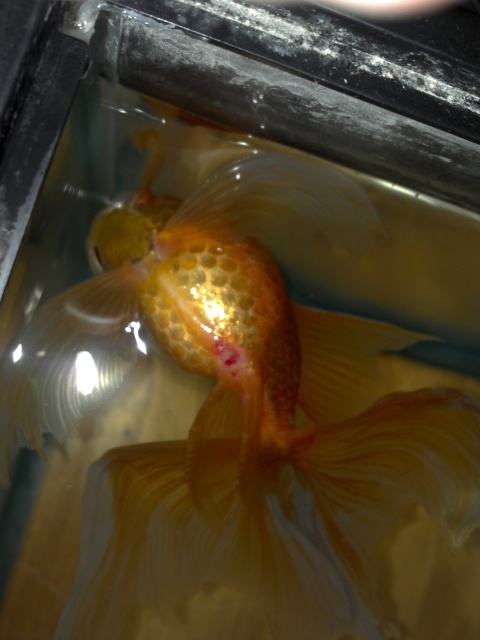 goldfish floating upside down...help please!
QuestionShirley1
QUESTION: My daughters goldfish
goldfish floating upside down...help please!
QuestionShirley1
QUESTION: My daughters goldfish